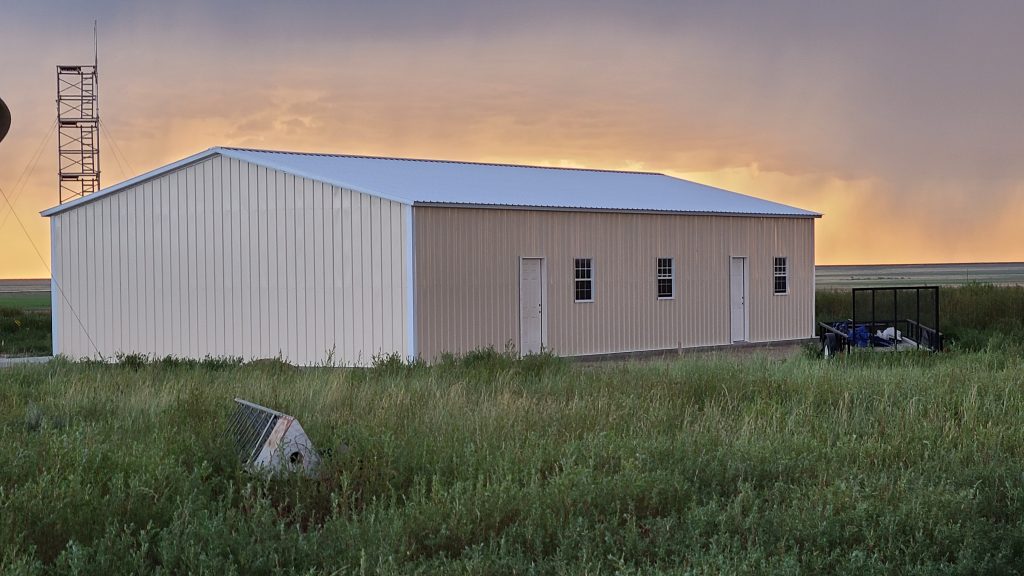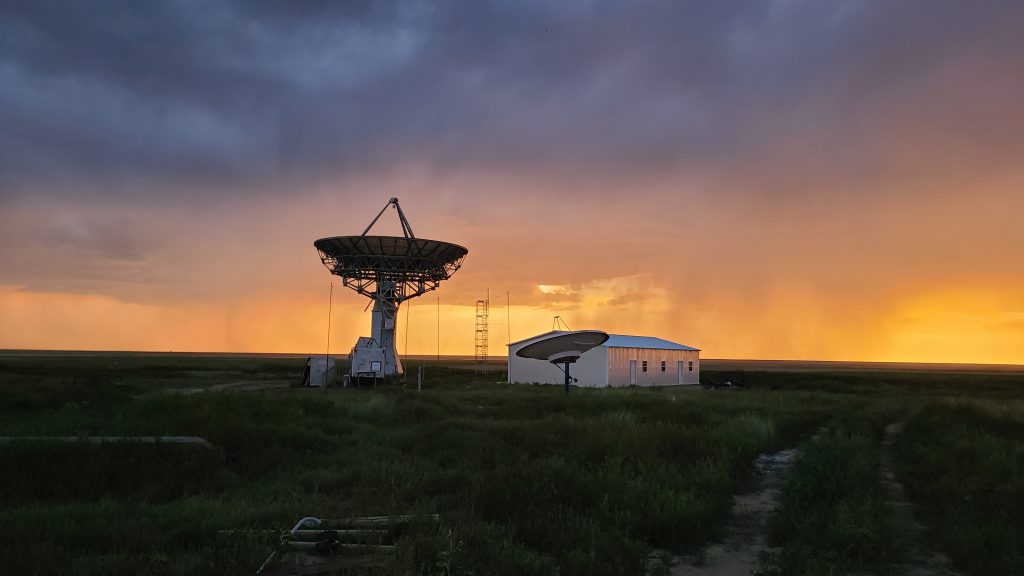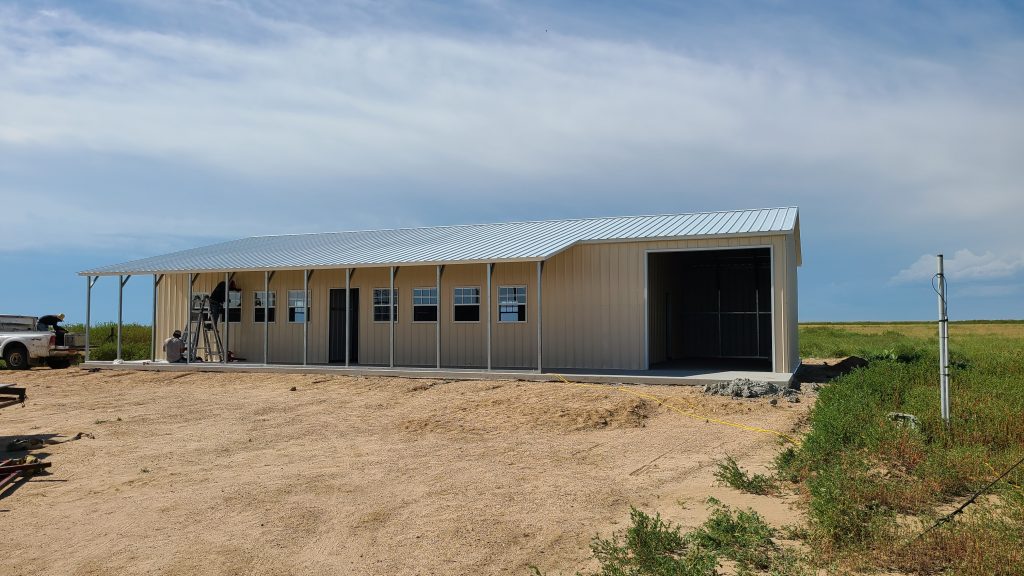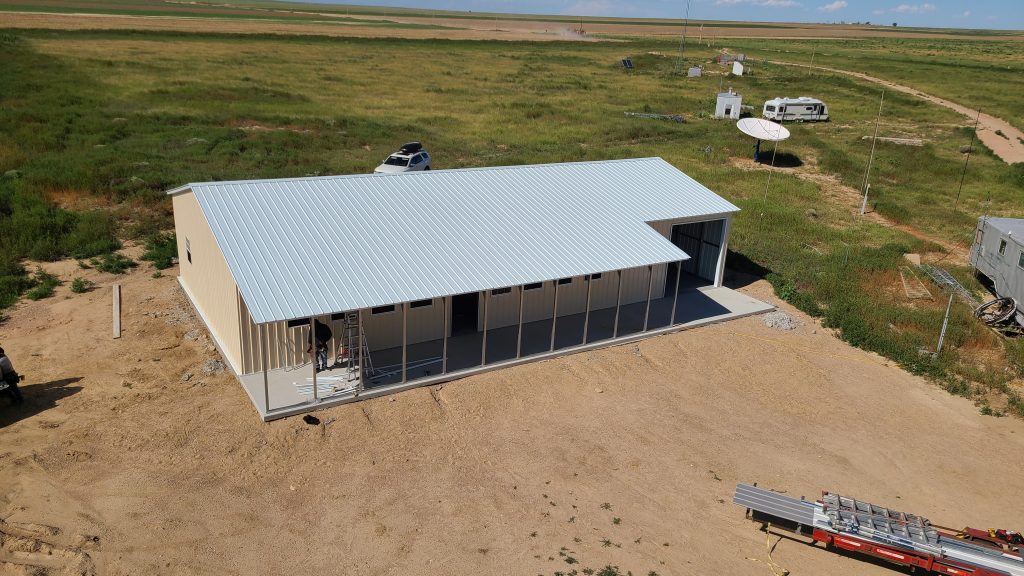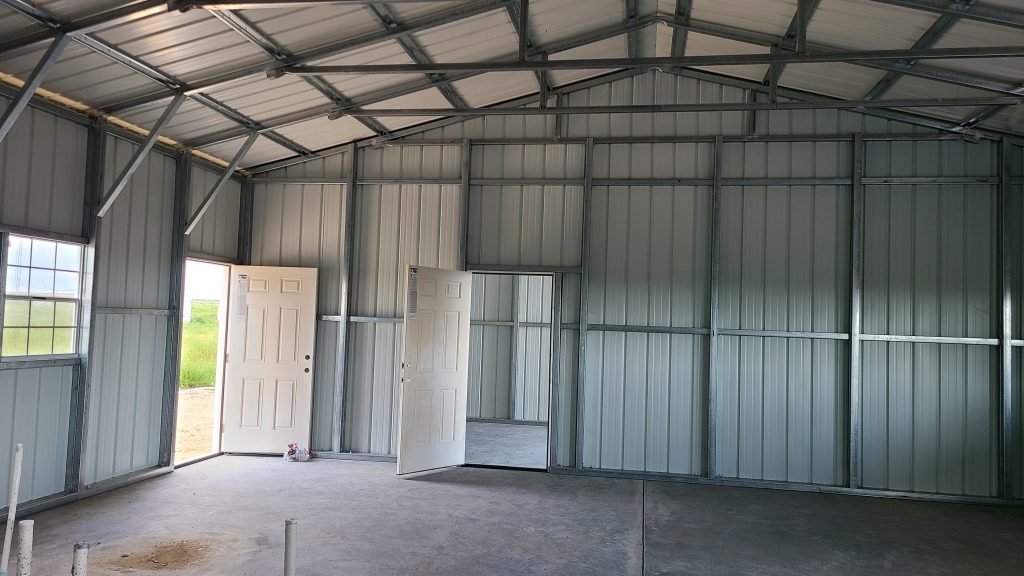DSES participated in the DUBUS EME contest May 10-12, 2024. We made contacts in Europe, Canada and the US.
Mike K0FYR (Ham-Solo) created another great video this year covering the contest: DUBUS Contest 2024 at DSES (youtube.com)
Thanks to everyone who was on site for the contest!
Category: DSES posts
DUBUS Contest 2024
We are thrilled to announce that, once again, the Deep Space Exploration Society (DSES) has been invited to participate in the 2024 European Earth-Moon-Earth (EME) Contest sponsored by DUBUS and REF, set to commence on May 10 at 0000 UTC. This prestigious European contest, focusing on Continuous Wave (CW)/Single Side Band (SSB) communication, presents an exciting opportunity for our members to engage in Earth-Moon-Earth (EME) communication with the international community.
Date Begin: Friday, May 10, 2024, at 6 PM MST
Date End: Sunday, May 12, 2024, at 1 PM MST
Location: Paul Plishner Radio Astronomy and Space Sciences Center
9301 County Rd 20, Haswell CO 81045
Last year, our participation in the contest yielded remarkable results, with our members successfully contacting over 80 stations off the moon using our formidable 60-foot dish. In fact, our collective efforts secured us a remarkable 2nd place in this esteemed worldwide contest. Building upon this success, our goal this year is to surpass the number of contacts made and demonstrate our ongoing commitment to excellence in deep-space communication.
It’s important to note that the contest primarily occurs during daytime hours, aligning with the moon’s morning rise and facilitating communication with many European stations. Additionally, we anticipate Pacific and Asian EME contacts during the late afternoon and early evening hours. Moonset times are scheduled for 10:20 PM MST on Friday and 11:20 PM MST on Saturday evening, providing ample opportunities for engagement.
For those planning to join us, rustic overnight accommodation will be available in the new unfinished building. Please remember to bring your own sleeping bags and cot/air mattress. Alternatively, the Cobblestone Inn in Eads, CO, is available for those seeking more comfortable lodging. Reservations are necessary for accommodation at either location.
To facilitate our planning efforts, we kindly request interested participants to contact:
Vice President Marketing
Paul Sobon, NOØT
Email: sobonpaul@gmail.com
February 2024 Science Meeting
Dan Layne presented a discussion on Exploring Magnetic Fields.
Slides can be found here: February 20204 Science Meeting
The video of the presentation: February 2024 Science Presentation
Pike Peak Regional Science and Engineering Fair Judging Report
by: Bill Miller Feb 24, 2024
On Saturday, February 24th the DSES team consisting of Floyd Glick, Dan Layne, Roger Oakey, and Bill Miller participate as special awards judges for the Pike Peak Regional Science and Engineering Fair.
We judged the senior and junior projects by splitting into two 2 man teams. For relevance and time savings with so many projects to cover, we tried to judge only those projects that had some relevant aspect to what we do in the society involving, space science, radio, computers, engineering, energy, and other related areas.
We planned to give a 1st and 2nd place award in both senior and junior divisions for a cash award in an amount decided by the DSES BOD and a certificate from the DSES. However, in the senior group, we found one additional and unconventional research project for this age group and believe that it also deserves a special award, so we have added one additional award in a tie for senior division second place.
Here are the projects and award levels:
Senior 1st Place Special DSES Award: SD 2 – Waste to Watts: Converting Locally Sourced Organic Waste into Activated Carbon Based Supercapacitors. Shrey Rohilla, Grade 11 The Classical Academy High School
Senior 2nd Place Special DSES Award: SC 5 – Strength of EMF Waves Radiating from High Powered Electrical Lines. Jessa Book Grade 10, Miami Yoder High School
Senior 2nd Place Special DSES Award: SC 1 – Can Quasars create “dark” Stars using the Dark Matter they Absorb? Rhianna Williams Grade 12 Palmer High School
Junior 1st Place Special DSES Award: JD 2 – Shopcart 2050. Advait Jadhav Grade 7 Chinook Trail Middle School
Junior 2nd Place DSES Special Award: JD 6 – Object Detection with Raspberry Pi to Help Blind Mobility Angelina Won Grade 7 Challenger Middle School
DSES at Jan / Feb Hamfests
DSES was represented at the January NCARC Winterfest and February RMHAM The Swapfest by Paul NO0T and Bill WT0DX.
The Swapfest, held at the Adams County Fairgrounds, was a great event, with good attendance, a lot of equipment for sale and many interesting conversations about DSES with the attendees. We had a great location by the front door, so there was a lot of traffic coming by the booth. Myron KL7YY and Ray AAOL from DSES were also able to attend the hamfest. Paul picked up a pristine Icom 7300 for the DSES HF station at a bargain price!
See the following photos of the booth and general views of The Swapfest.
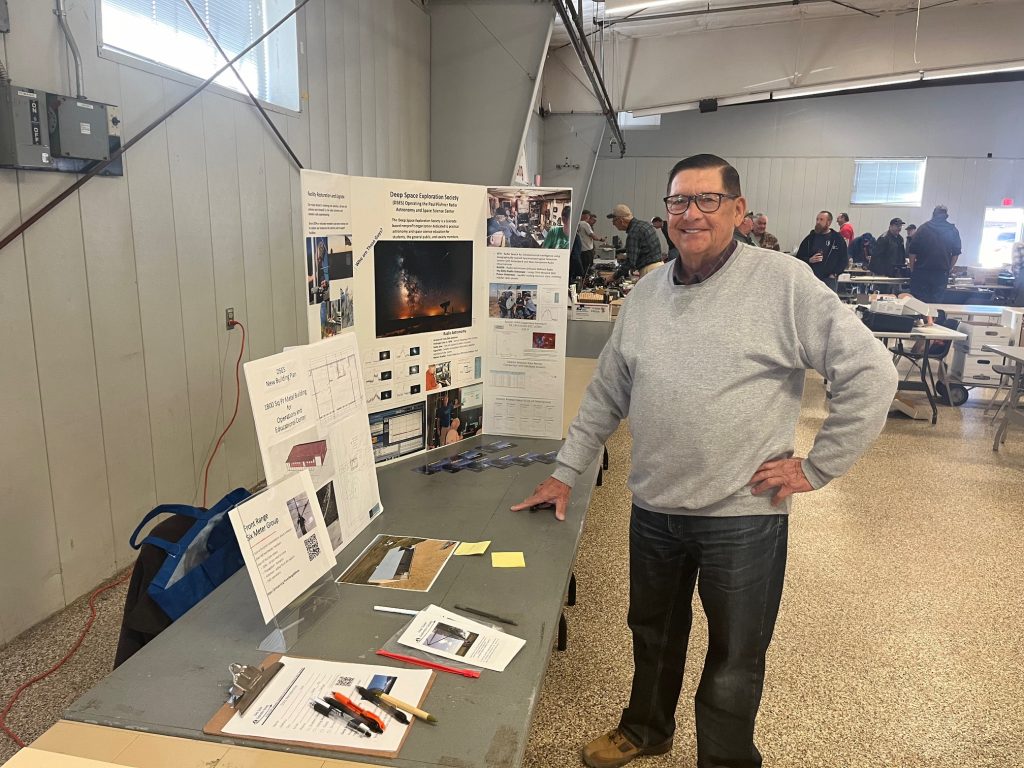
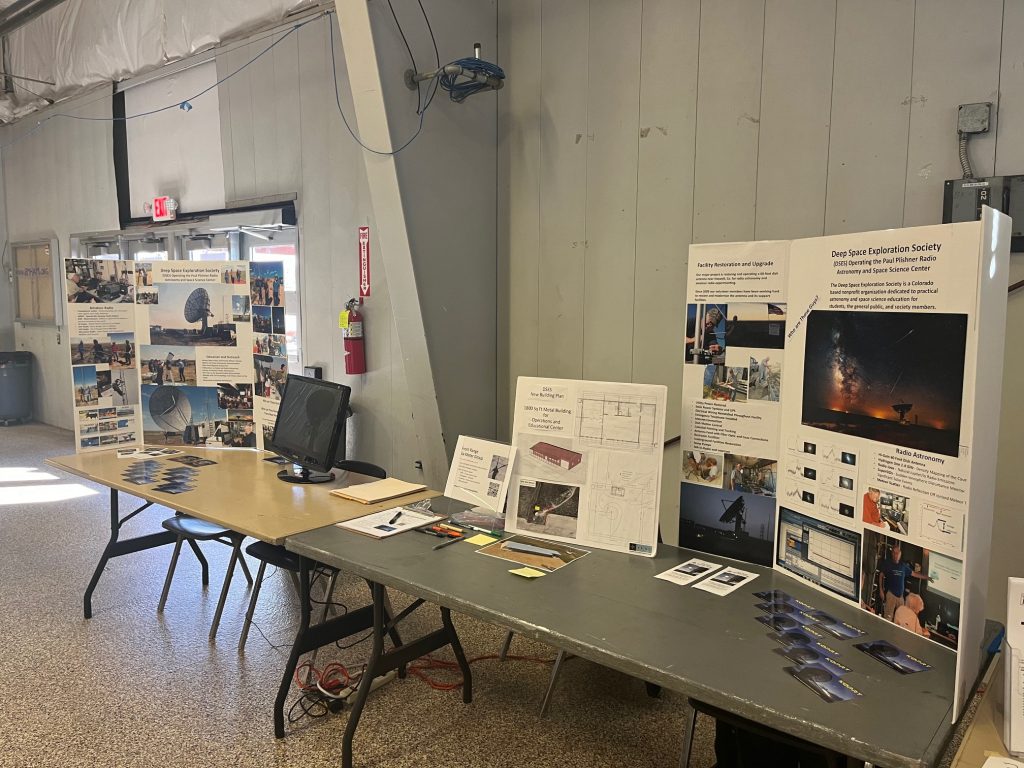

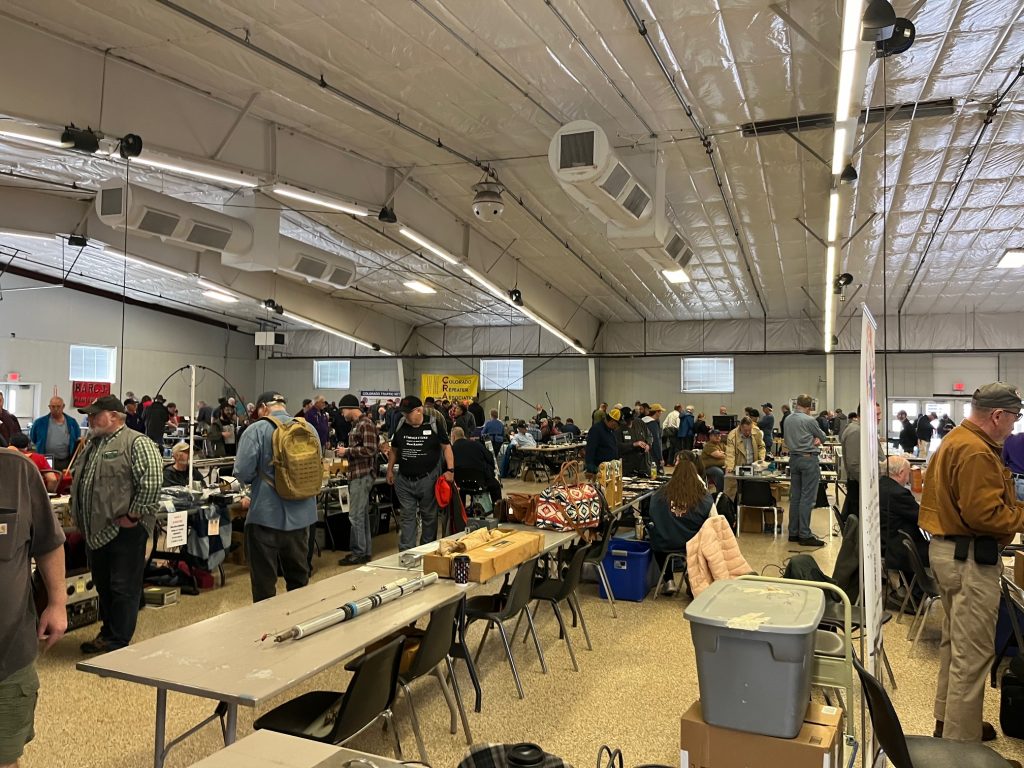
January 2024 Science Meeting
Dan Layne presented a list of science projects planned for 2024.
The presentation slides: January 2024 Science Meeting
Video of the presentation: January 2024 Science Presentation
Dec, Jan, Feb trips to the Plishner Radio Site
Bill Miller has provided the following report on Plishner site visits from Dec 2023 to Feb 2024. In this report he covers recent work on the new building as well as work performed on other site visits.
Read the report here: Dec, Jan, Feb trips to the Plishner Radio Site
DSES Open House 2023
By Bill Miller and Paul Sobon
Every year the DSES holds an open house public event, where we provide tours of the facility and demonstrate what radio astronomy and Amateur radio are all about. This year, on September 16 we demonstrated EME (Earth Moon Earth) or moon bounce communication allowing folks to bounce their voice or radio signal off the moon using our 60 Ft radio dish antenna. This is a rare opportunity and thrill for children and adults alike, to hear their voice echo off the moon, traveling about 240,000 miles to the moon and back at the speed of light,186,000 miles per second. The echo returns in about two and a half seconds. Only a few private stations in the world can accomplish this because it takes a very large antenna and powerful transmitter for voice transmission to echo off the moon. In addition to hearing our own echoes, the EME station was able to contact other stations in Canada, Italy, England, and Germany as well as many other ham operators in the USA. We also gave tours of the new building and underground facilities and did solar and nighttime observations with optical telescopes. An astronomy presentation on Pulsars was held during the event. Throughout the day, we got a lot of great questions from the public about the site, and what we do there. There were about 75 people who attended the event.
The 60 Ft Diameter Radio Astronomy Dish Antenna stands 55 feet tall, weighs over 65 tons and is made of aluminum and steel. It can point in any direction at any elevation so is full hemispherical. The dish is so well balanced that it only takes 3HP motors to drive it from horizon to horizon in just a few minutes. The Facility and dish were built around 1959 and used to study high speed microwave communication at great distances in support of our northern defenses or DEW Line. In about 1973, when Satellite and fiberoptic communications took over, the facility was put up for government auction and sat unused for about 40 years. After some time, Paul Plishner, a prominent radio and microwave contractor, purchased the facility donated it to the DSES who have been working diligently to restore it since about 2009. The DSES has repurposed the dish and facility for Amateur Radio Astronomy and Ham Radio. So far, we have detected 24 Pulsars, mapped the Hydrogen radio Emissions of Milky Way Galaxy and done countless radio experiments. The facility is completing a new building as an operations and educational facility and has many new projects on the horizon.
When operating EME most people were awestruck, pondering the distance and speed. The children thought that it was really cool. As we explained the other things that we do, we dispelled some misunderstandings and enlightened visitors about our Kiowa County operation.
According to the FCC there are about 43 Ham Radio Operators in Kiowa County and many more in the surrounding counties. Several hams from those counties showed up for the event but we had members from the Front Range and as far away as Oregon and Arizona come in to help with the event. Almost everyone who wanted to was able to be a guest operator for the EME and many were given a tour and demonstration of the general-purpose ham radio station at the facility. During the open house day, many ham radio stations across the USA were contacted from our ham radio station K0PRT.
DSES holds this open house only once per year. However, the public can stop by whenever there is an official work party on site. The Deep Space Exploration Society site is open to scheduled visits from educational groups or other social groups wishing a tour and presentation on Radio Astronomy. Also, the general public can join the Deep Space Exploration Society by signing up for membership on our website at https://dses.science/ for a small membership fee, entitling them to all of our meetings and events onsite.
The Pork BBQ catered by the Michelle Nelson, the mayor of Haswell and her family, was definitely a hit with everyone. We asked for a donation to support the BBQ and raise money for the Haswell Community Center and 4H club.
Duncan WE7L hears his voice bounced off the moon:
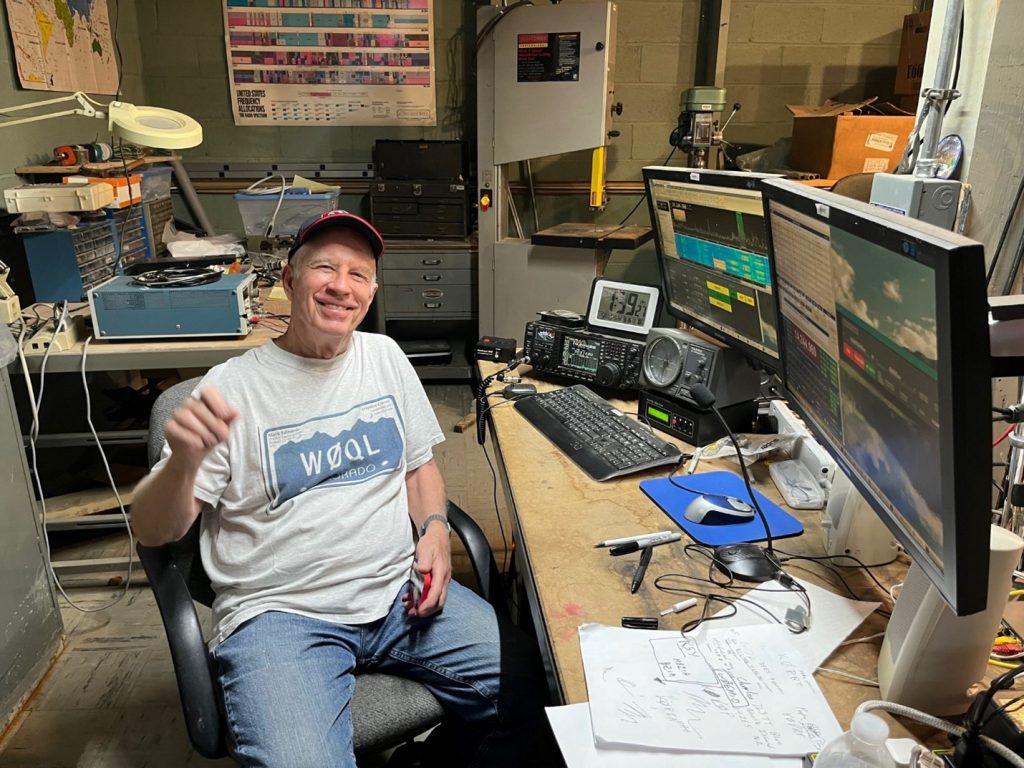


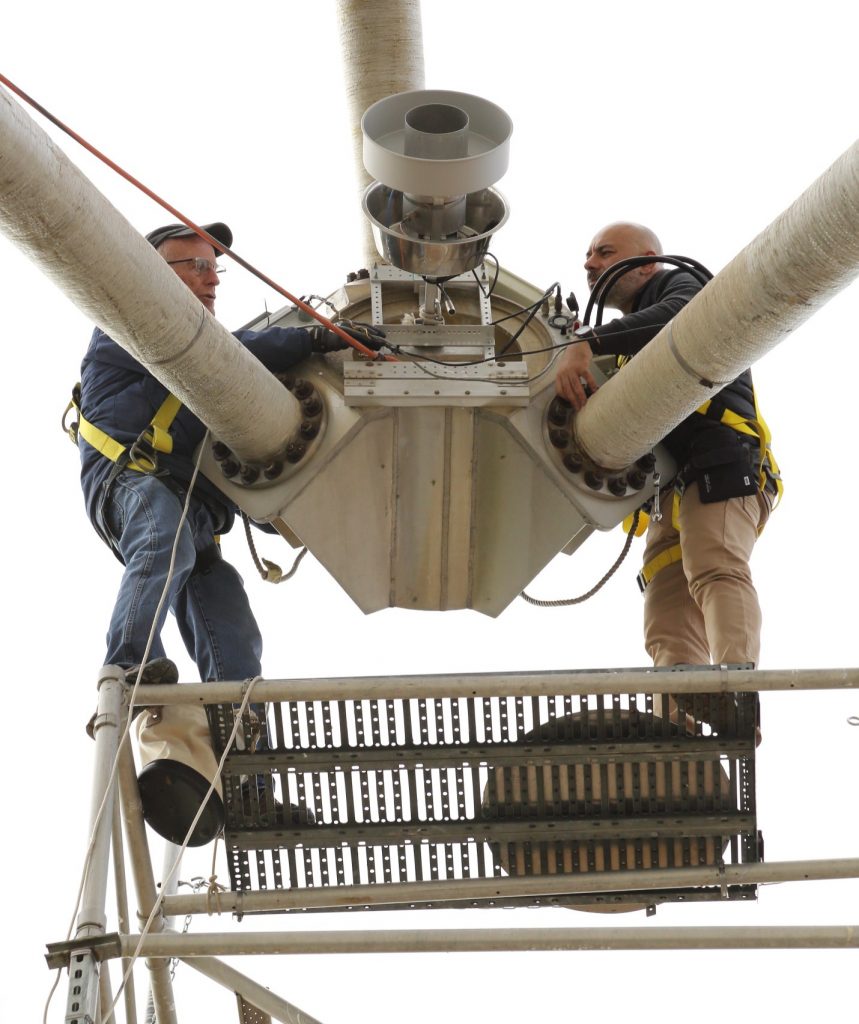
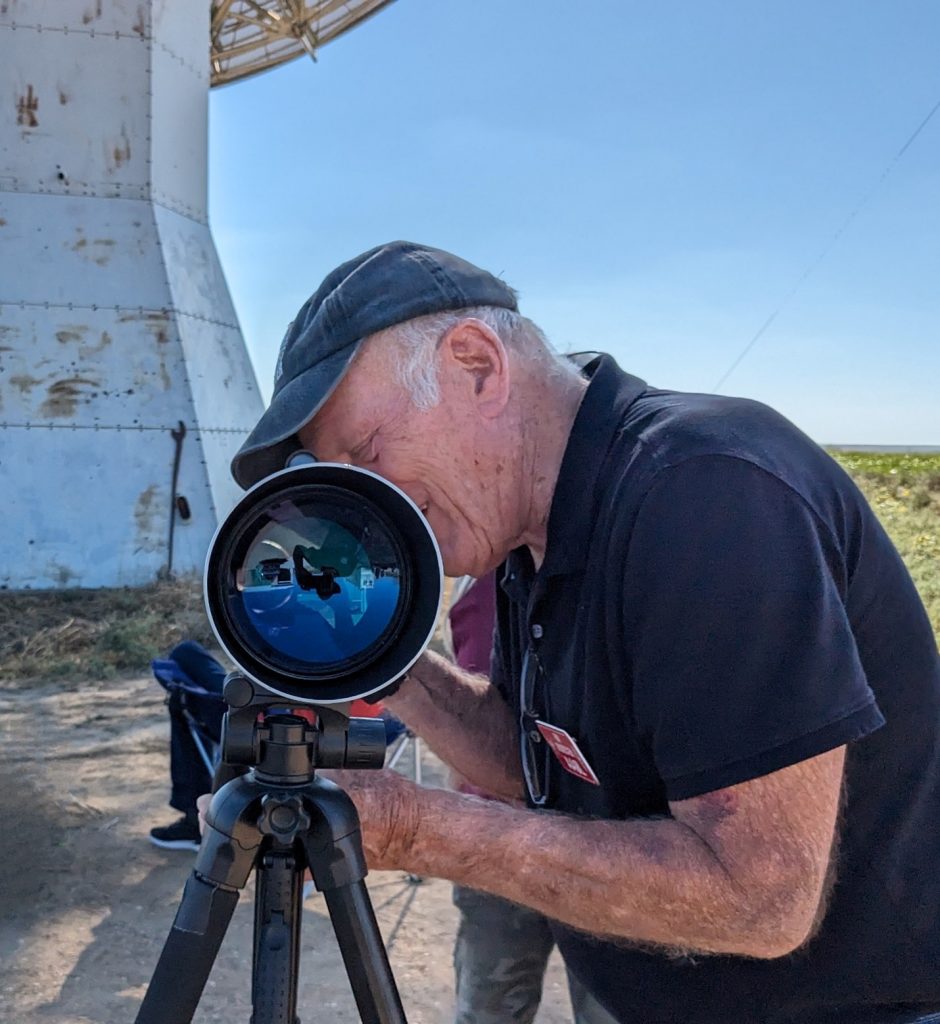
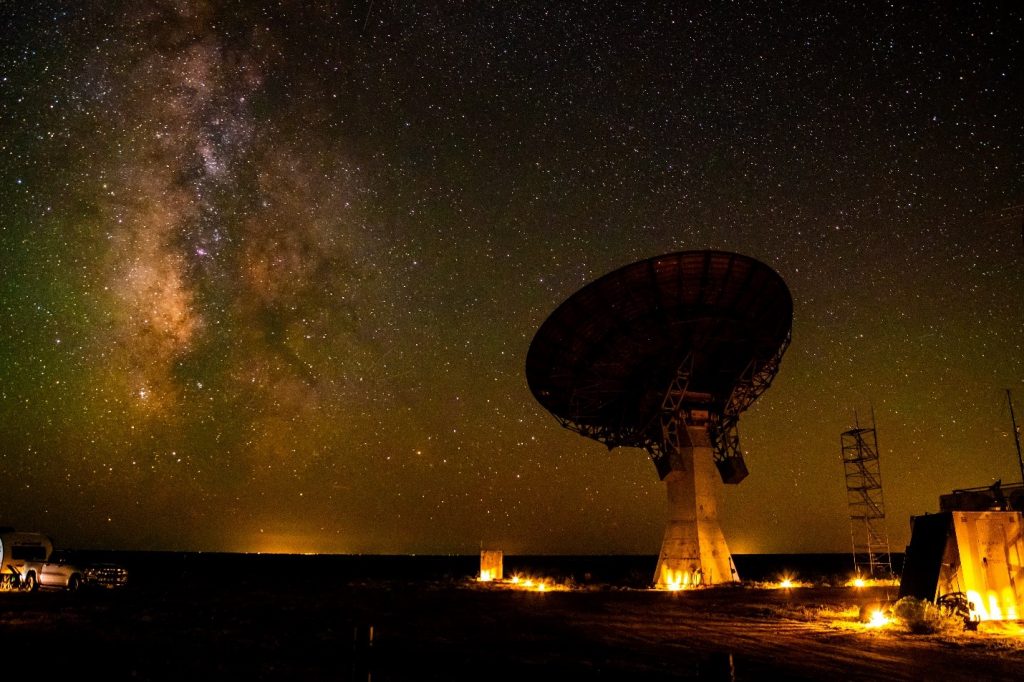


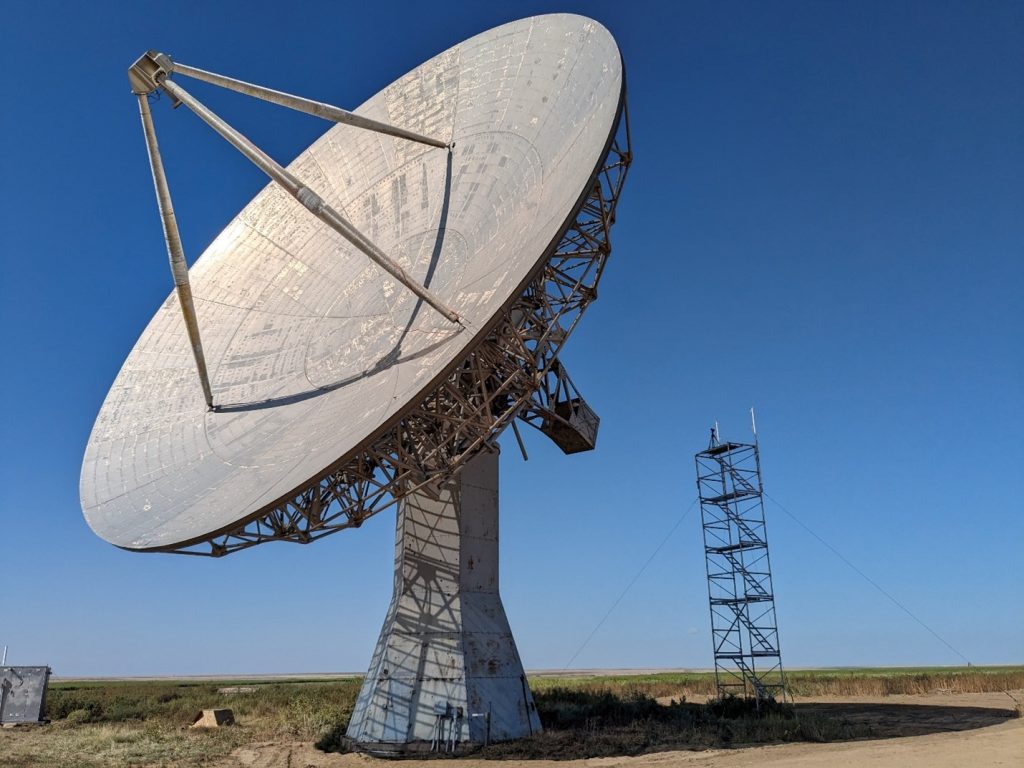
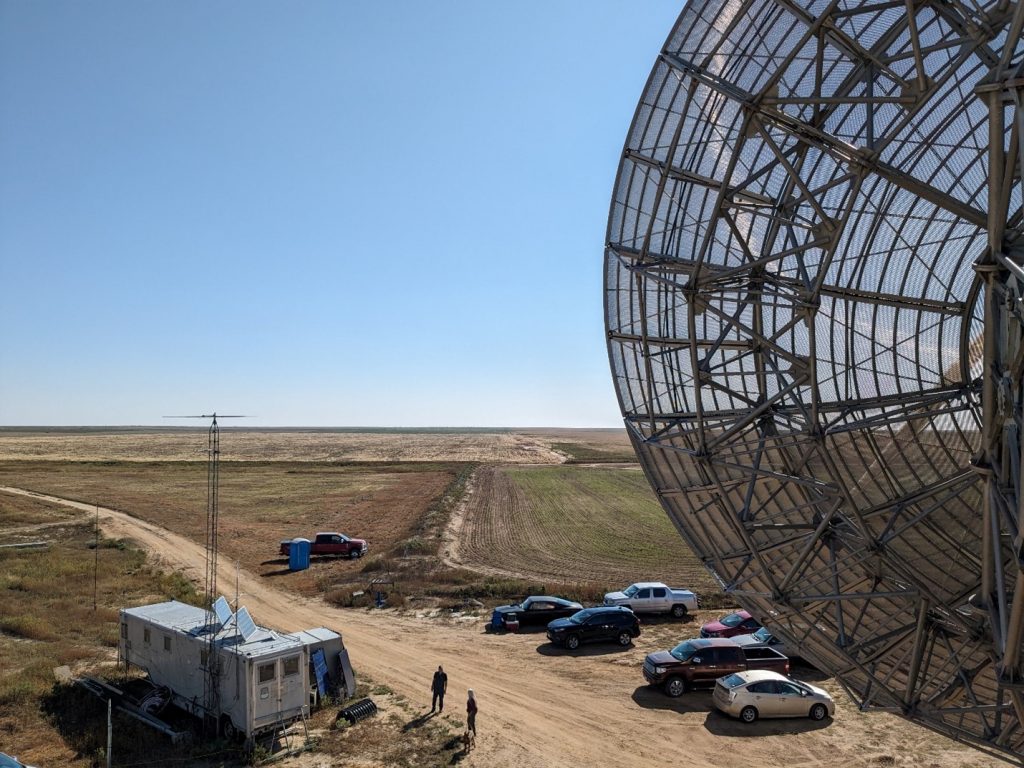

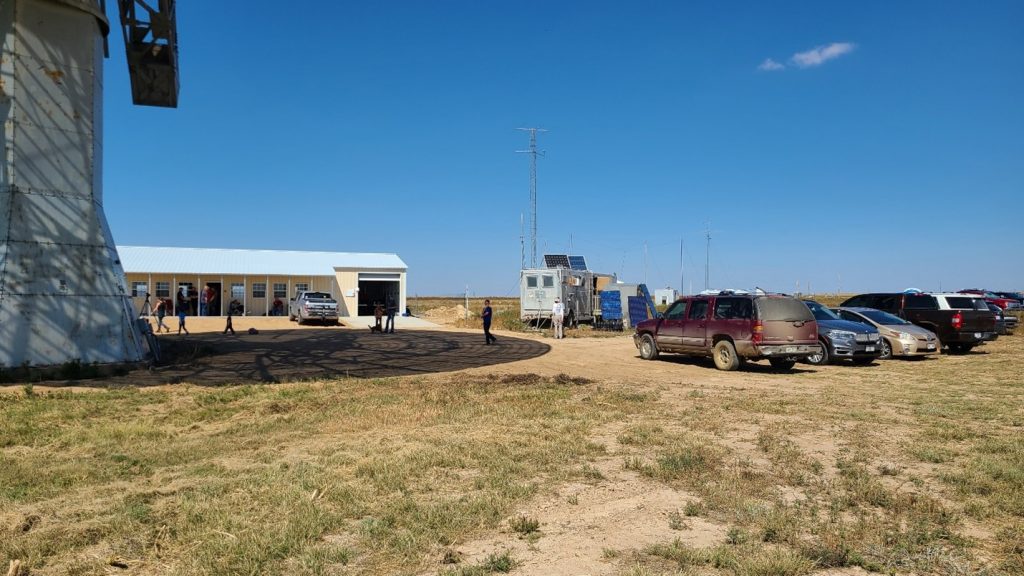

Photo Credits: Marc Slover, Roger Oaky, Bill Miller and Bill Thomas
DSES at Recent Events
Bill WT0DX represented DSES at three recent ham radio events: The CSVHF Conference, the Rocky Mountain Division Convention and the Denver Radio Club Hamfest. In each case, a posterboard display was set up, site videos were displayed, and club brochures were handed out. The upcoming Open House was also promoted.
CSVHF Conference
The annual CSVHF conference was held July 27-30 in Little Rock, AR. There were about 150 participants. The posterboard display was set up in the main meeting room and the Friday night swap room. In addition to talking about the club, several folks said they were interested in attending the Open House.

Rocky Mountain Division Convention
The Rocky Mountain Division Convention was held August 11-13 in Albuquerque, NM. They provided a free table for clubs in the swap meet area. There were about 400 attendees, and many interesting conversations. Unfortunately, many of the folks thought that the DSES site was too far away for an Open House visit.
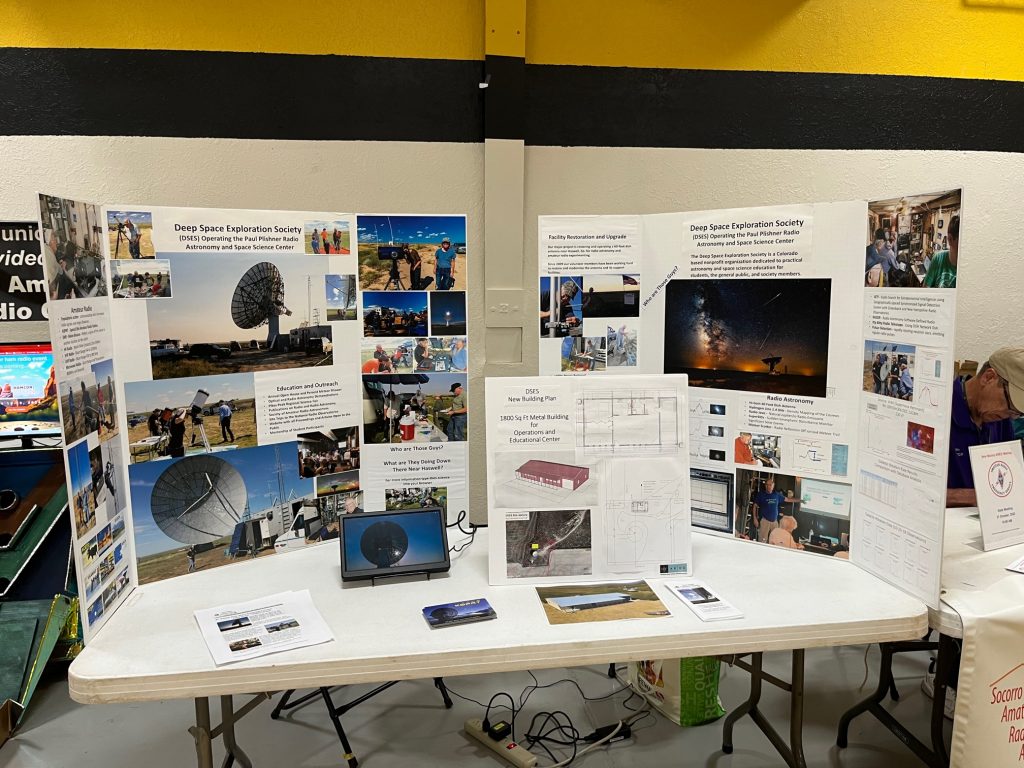
Bill also had an opportunity to discuss DSES with David Minster NA2AA the CEO of ARRL. He was unaware of the club but found it very interesting.
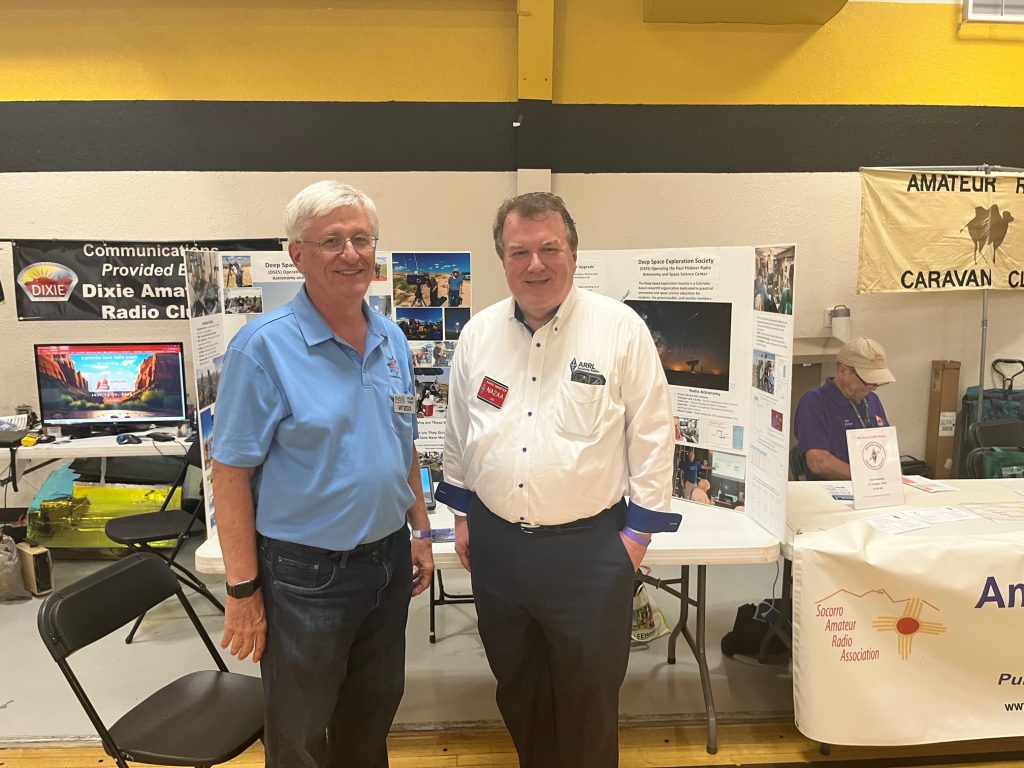
Denver Radio Club Hamfest
The Denver Radio Club Hamfest was held on Sunday August 27th at the Adams County Fairgrounds. This is a well-attended hamfest and we had many good conversations about the club, with quite a bit of interest in the Open House. Also, Paul NO0T managed to secure a great donation to the club of several HF Yagi antennas.
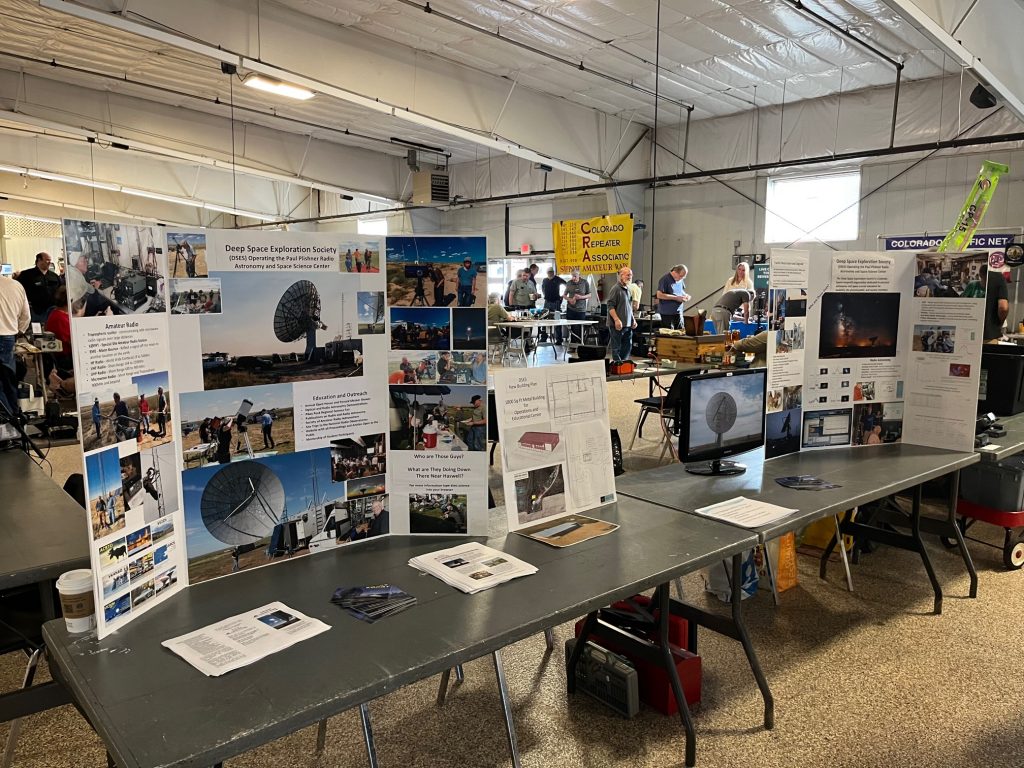
New DSES Building Update
An update on the progress of our DSES building project. Our DSES Vice President and Project Manager, Bill Miller, has spent many hours and has made many trips down to the Plishner Site near Haswell Colorado to make this project happen. After many delays, some due to COVID, in finding contractors for concrete, plumbing, and electrical as well as building manufacturers to provide a 60-foot by 30-foot structure, DSES has finally made some progress. We still have many hours of interior/exterior work and antenna towers to place before we can move our current operations from the existing communications trailer and the underground bunker. This future work will still require many trips and hours on site to complete these tasks. We hope our local Colorado DSES members will be able to provide some help in completing these projects. DSES will provide dates and times of these trips so members can plan their time at the Plishner Site. A big thank you to Bill Miller for taking on this project and to those other members who were able to assist him over the past few months.
Myron Babcock
President/Treasurer
DSES
